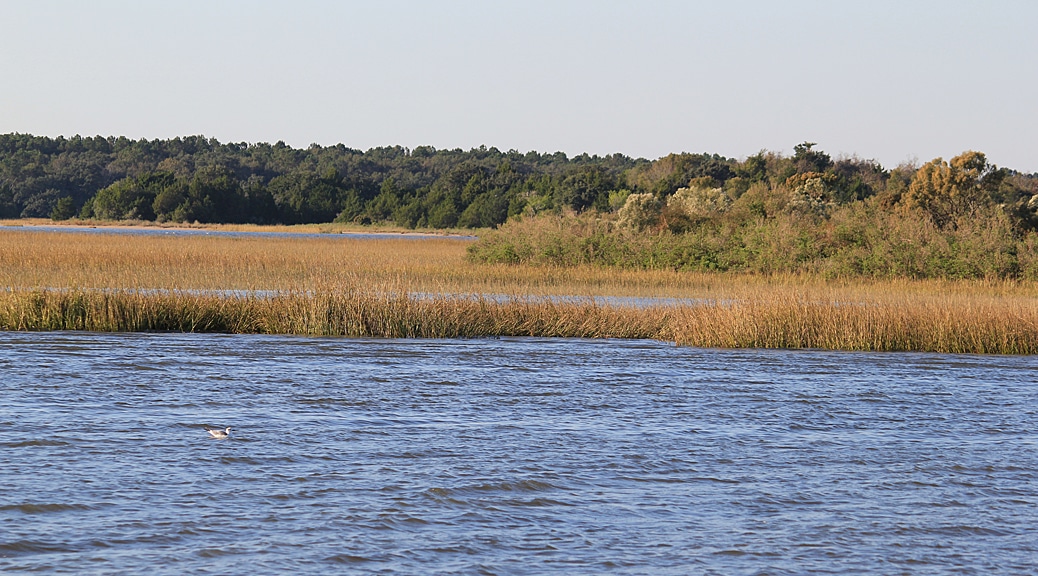Last night, our anchorage at Bull Creek was “the bomb”! Billed as a “big sky” anchorage, we were in a woods-lined channel with brilliant constellations everywhere. We had 26 feet of water. The current was strong enough that we slept out in the cockpit to monitor for any dragging. The alarm on Drag Queen was non-functional due to poor GPS reception. We expected the current to reverse around midnight, but it never did, leading us to believe that the rivers are so saturated they continue to spill excess during the whole tide cycle. Around 11 a low-flying helicopter with search light flew over, lit us up and moved on. Too dark to see markings on the copter. We were very near the wildlife refuge and the woods were mostly pine and are pristine. The woods made every sound echo. There were tons of giant-sounding owls hooting over a background of crickets plus ghostly screaming howls that Paula thought must be coyotes. Periodically there was the crash of a falling limb in the woods (Bigfoot?). There were no other boats.
To Paula’s endless amusement, Tom seemed to think these sounds were more creepy and unsettling than cool, and Paula had fun tormenting him with tales of rabid bats (we didn’t see any) and then threw a length of knotted light sail repair twine across the darkened cockpit to land on his neck. Ha! The kiss of the vampire! He was a good sport, but Paula suspects he will attempt revenge later.

Next morning we rose at 5:45am and we underway as soon as it was light-around 7:15am. Our first challenge was the Lafayette 65′ fixed bridge. We hoped this would be an easy passage as the tide was falling, but as we approached the bridge, there were no number boards, and a construction crew was working on the middle span, with the whole middle span swathed in some kind large tarp, men working inside, with multiple strings hanging down from the tarp, at the perfect height to snag our Windex and antenna. Paula had a momentary mental image of our mast catching the tarp, dragging hapless construction workers down from their perches. Especially as when we approached the bridge, two workers exited the tarp and ran to the bridge railing to watch our approach. The current was strongly pushing us, so there was no going slow. We barreled through and just “twanged” the antennae. Our closest clearance yet and no casualties.
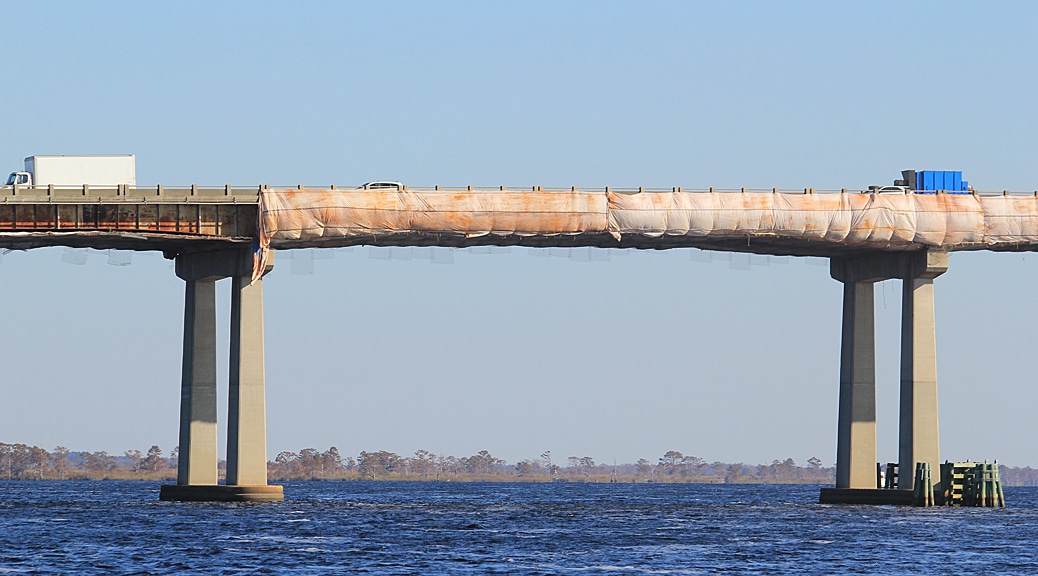
There were several narrow shallow spots to traverse today, and we took the first on a rising tide, and the second just as the tide reached full. The first, Four Mile Canal, had tight turns, and as is now usual for us, just as we went through, the winds gusted to 20 mph. We did touch bottom during one sharp turn as the butt end of C Ghost was pushed sideways from wind and current, but never really grounded.
We got a text from our friends on their Chris Craft, “Christine” a little further down the ICW that they encountered really shallow water (5.5 feet near low tide) on a troublsome 5 mile stretch south of McClellanville, S.C. We hadn’t planned to traverse this area until tomorrow. But based on their report, and with a strong current and wind both pushing us at that moment, we made the decision to go further than we originally planned today so we could reach McClellanville on a rising tide very near high tide. Our boat draws 5′, and likely 5’3″ now loaded with diesel, water and provisions, so we can use all the tide cushion we can get. McClellanville was tense, but we never saw less than 6’8″ of water, so we were glad we’d pressed on and got this part behind us.
While traveling, we saw some deer in the tall grass, and a beautiful schooner. The scenery featured tall sea grass, pines, and sculpted driftwood.
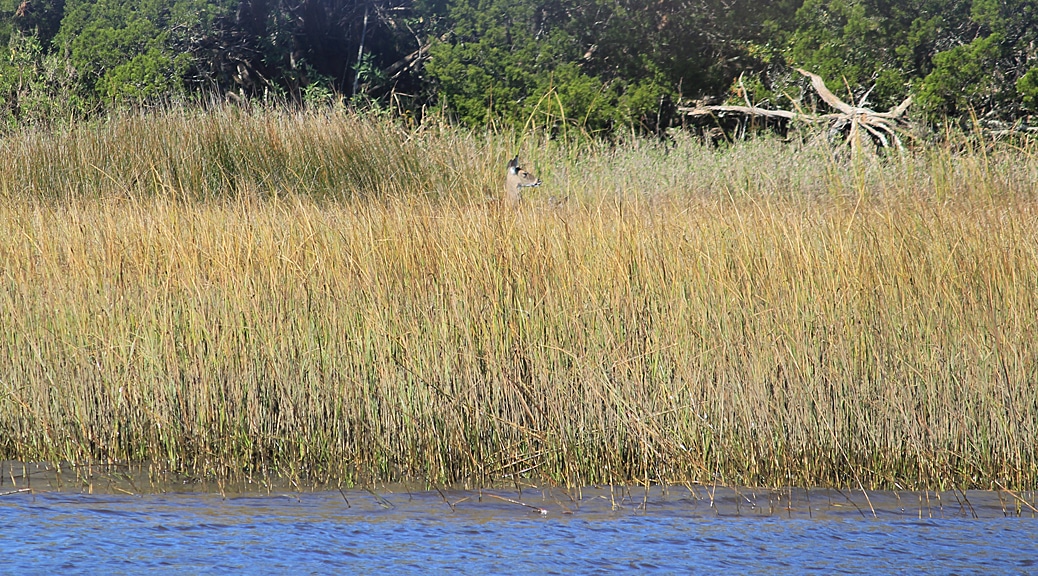
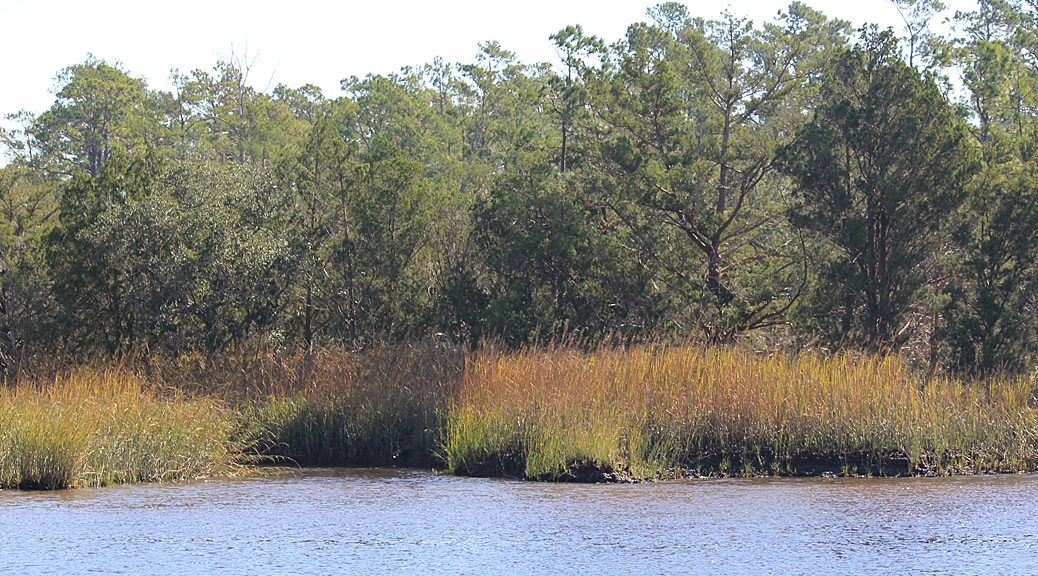
Tom also realized that suddenly, the alternator was not charging the batteries. As the solar panels were putting juice in, this was not a disaster, but still troubling. After a quick look in the engine compartment, Tom discovered that one of the wires from the regulator had come loose, probably due to a faulty crimp. Not needing immediate attention, we decided to wait until we were anchored to fix it.
These challenges over, we turned into our alternative anchorage for the evening (since we went further than planned) Awendaw Creek, just off of Bull’s Bay. There is a swift current, and although it does provide slight protections from N and S winds, the winds have not diminished as predicted by NOAA and Accuweather, and we currently have 13 mph out of the E/NE. Unless the winds subside soon, it will be another night in the cockpit on anchor watch. To compensate, pods of dolphins have been swimming by our boat and across the anchorage. We can hear them blowing air through their blow holes and the are sleek, black, and very camera shy! We also see egrets, pelicans, a single bald eagle, and numerous cormorants, terns, and gulls.
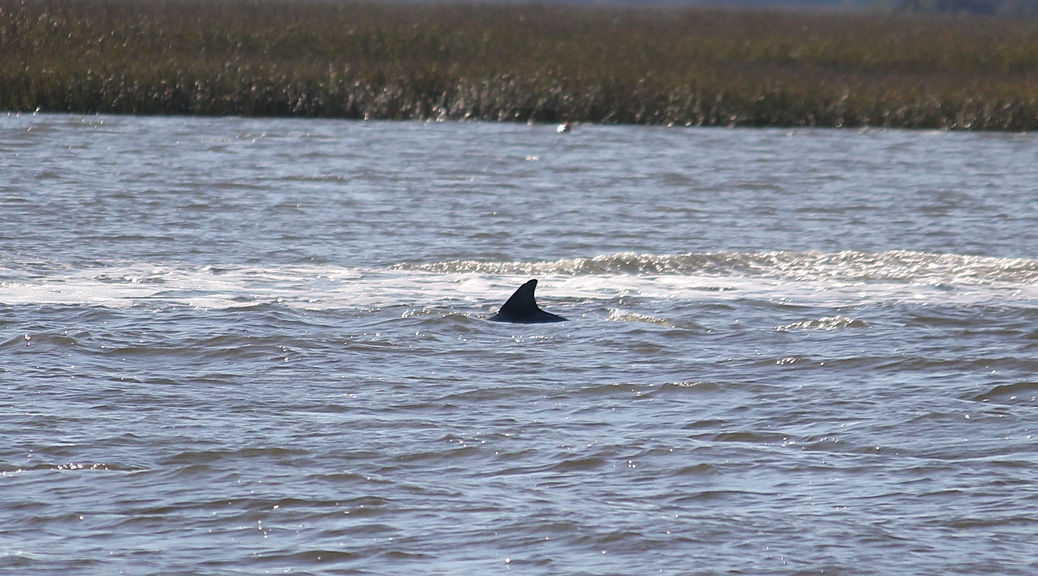
Tom went to work on the alternator once we were anchored and fortunately it only took a few minutes to set right. The alternator now sends charge to the battery bank. Fortunately, the sun let the solar panels keep the batteries at 83%, which will last us till we start out tomorrow.
Tonight’s meal is diverse leftovers: sausage with pasta, pork and sauerkraut and prime rib left over from one of Tom’s restaurant dinners. Tomorrow we hope to arrive at Charleston.
